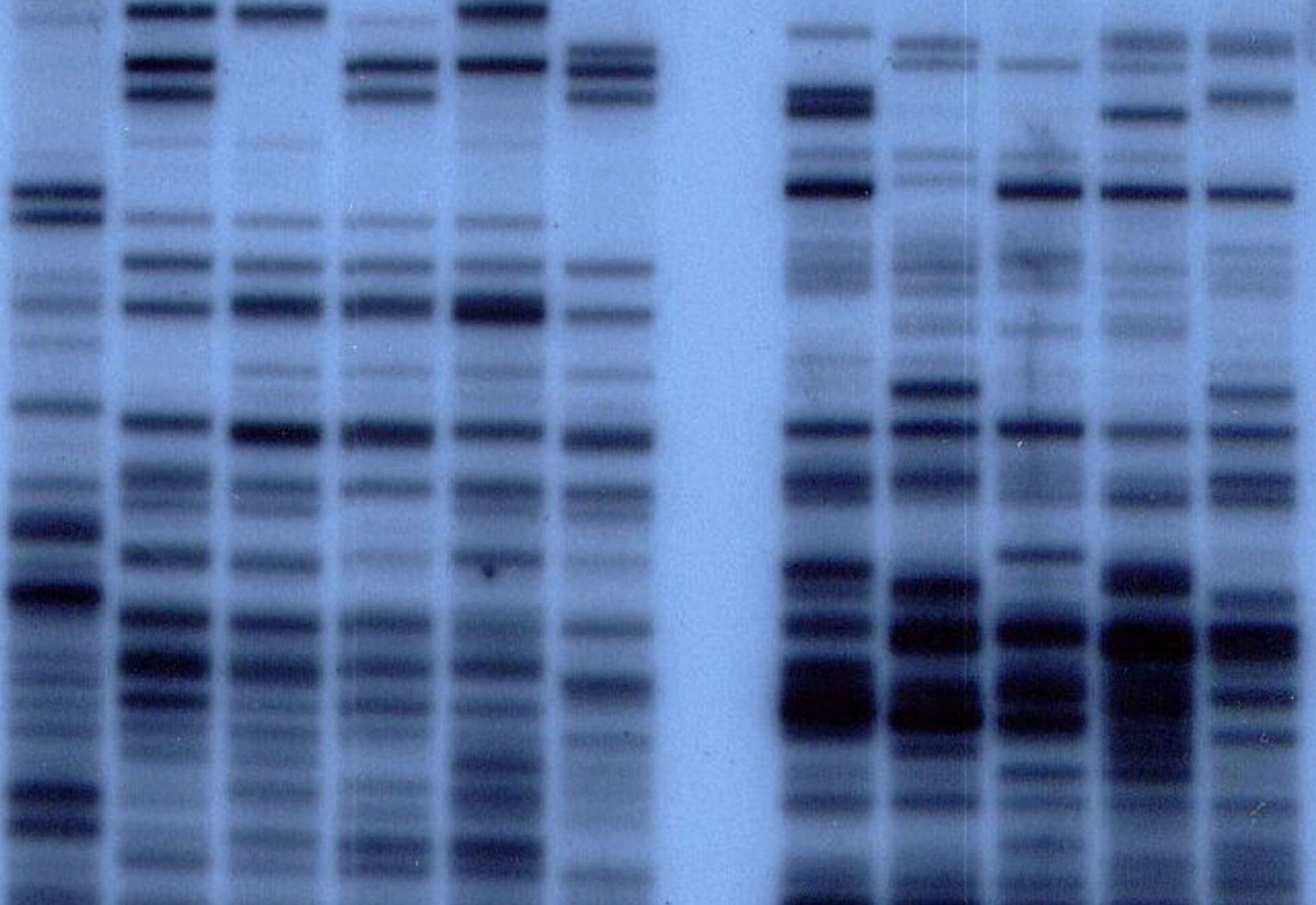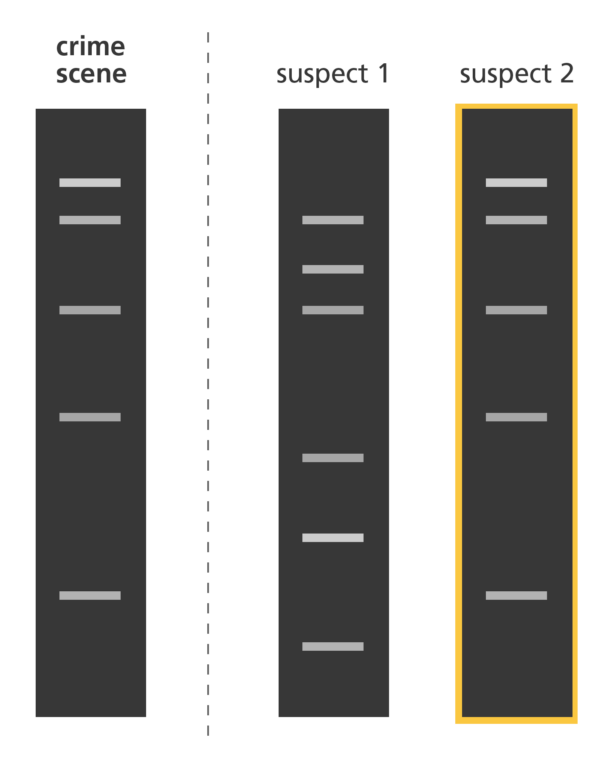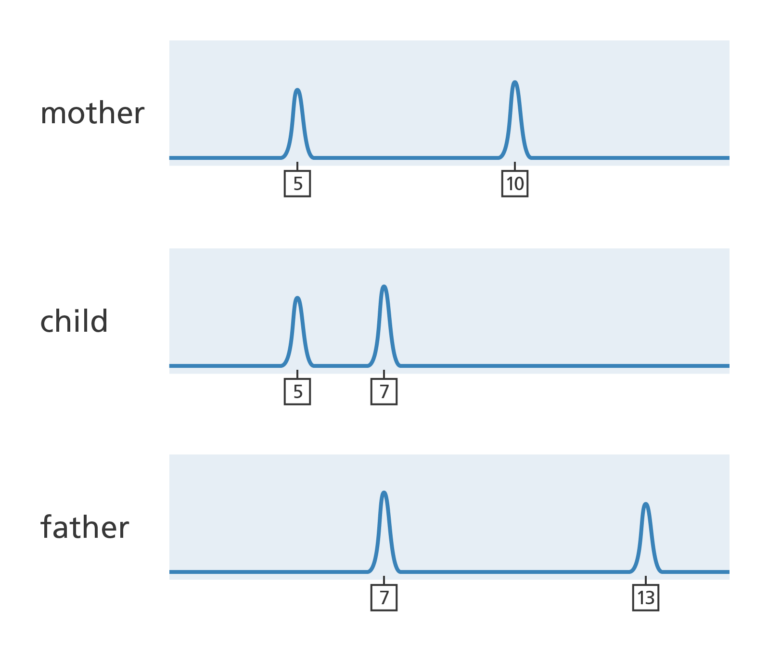What DNA is profiling used for?
By Emily Farthing, Freelancer writer and editor.
Image credit: Alec Jeffreys via Wellcome Collection

Looking at unique patterns in different people’s DNA – known as DNA profiling – can help to solve crime and link biological relatives.
- On average, about 99.9% of the DNA between two humans is the same. The remaining 0.1% might not sound like much – but that’s around 3 million bases that can differ between two people.
- DNA profiling looks at these differences to produce a pattern that’s unique to an individual. This can be used for solving crime and linking biological relatives.
What is DNA profiling used for?
- Each human shares, on average, about 99.9% of their DNA with each other. The remaining 0.1% represents around 3 million bases and is what makes us unique.
- These differences can be compared and used to help distinguish different people from each other. Two techniques to do this are DNA profiling and DNA fingerprinting. You can read about them here.
- Except for identical twins, the probability of two people having the same DNA fingerprint is very small.
- This makes the technique useful for solving crime and linking biological relatives. DNA profiling has a high success rate and very low false-positive rate.
Using DNA profiles to solve crime
- DNA profiles are very useful in forensics, because they only need a tiny sample of human material.
- Since 2014, all samples in the UK have been analysed using ‘DNA-17’.
- The DNA-17 approach looks for 16 short sequences of DNA across the whole genome, called short tandem repeats (STRs), plus one STR that is only found on the Y chromosome. This is to confirm the biological sex of the individual. One reason the UK moved to DNA-17 was to provide consistency across borders in Europe.
- A match between a crime scene profile and an individual profile can identify a possible suspect.
- If matches are made between different crime scene profiles, this can indicate the same person has been at the same crime scene. This can help to identify repeat offenders.
- The police may use this DNA evidence to support other evidence to help prosecute someone for a crime. Complete DNA profiles give very reliable matches and may provide strong evidence that a suspect is guilty or innocent of a crime.

Using DNA profiles to solve crime link blood relatives
- STRs are passed between generations: individuals receive half of their DNA from each biological parent.
- DNA profiling can be used to help confirm whether two people are related to one another and is commonly used to prove that someone is – or is not – the biological parent of a child.
- DNA profiling can also be used to identify victims of crime or major disasters and help bring separated families back together.
